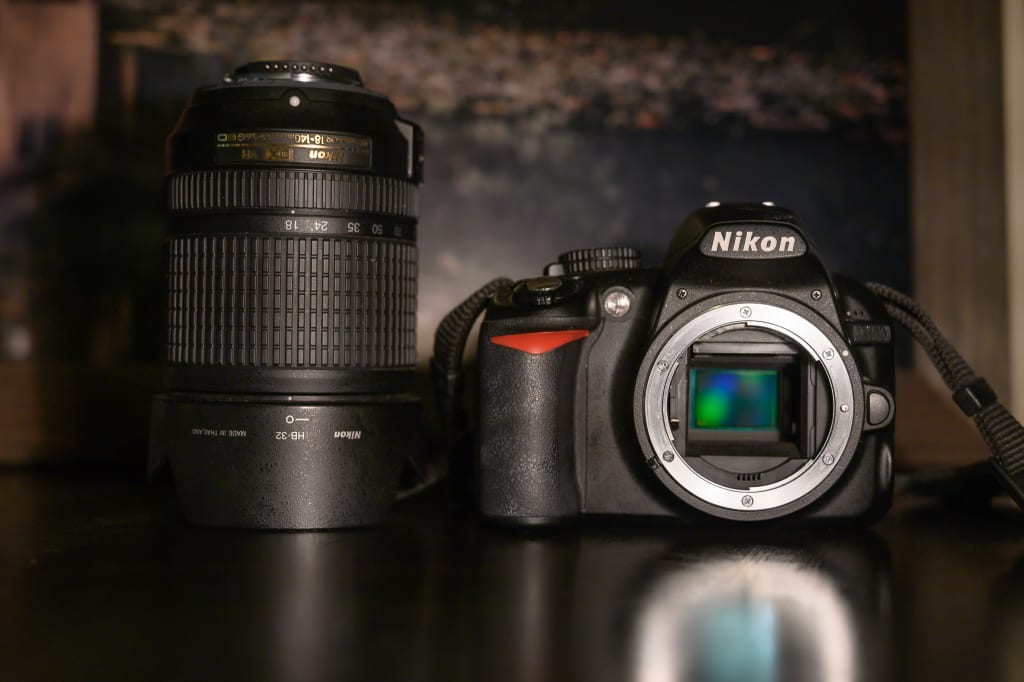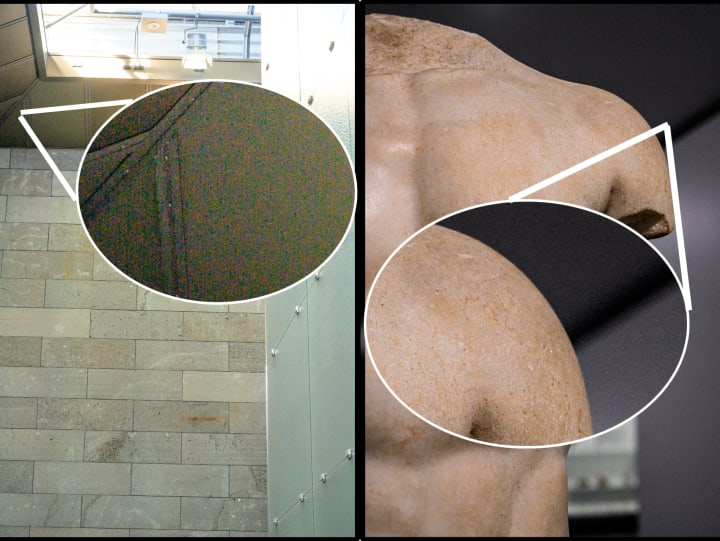ISO—Same, Same, But Different
ISO: A standard metric that's very standard while affecting our photos very differently.

Welcome back to another blog! This week we're going over another component of our exposure triangle, ISO. ISO is an interesting concept; it's just as important as our other components, while at the same time it doesn't matter quite as much unless we're in the nitty-gritty's of it (in digital photography). Let's explore the basics and look at why understanding ISO and its subtle differences are important, not just for the shot we're trying to take, but also if we're looking to upgrade digital camera bodies. This blog is less aimed at what exposures are needed for what environments of shooting, but more to challenge incorrectly held beliefs on how ISO operates, and to hopefully provide you with a hunger to research ISO more. I will cover ISO from a more scientific perspective in the future, but for today let's look at why common belief is wrong.
To start with, I think it's very important to get this out of the way; ISO is a standardised value, it is maintained by the International Organisation for Standardisation. ISO 100 requires "X" amount of light to expose a photo correctly, ISO 200 requires half of "X" amount of light, ISO 400 requires half as much light as ISO 200 did. When compared to film or digital photography, it represents two different things. For film it represents a "speed" in which light is absorbed by the medium. For digital photography it represents an artificial signal amplification. We'll go into a little bit of depth about this later. But it's important to recognise that outside of a benchmark for speed or amplification, its actual impact on our image for digital photography varies from model to model and from brand to brand and, once again, the settings we are using.
So if ISO is a standardised unit of measurement, why are digital cameras affected differently? Let's go over a small amount of history and how ISO works with film cameras to help us understand how digital ISO really works.
ISO before it was ISO
ISO is simply a standard metric of measurement as we mentioned before, but we haven't always had this metric. Prior to ISO, some countries had their own way of measuring a film's speed, or sensitivity to light. The International Organisation of Standardisation (ISO) developed standards for the photography industry to provide a consistent benchmark, meaning that ISO 100 film acted like ISO 100 film, and ISO 100 on a digital camera acted like ISO 100 on a digital camera in terms of exposure. ISO is a combination and refinement of ASA and DIN, two older metrics for film speed. Prior to ASA and DIN, the Soviet Union had GOST. Why is it important for us to know that ISO hasn't been there from the start? It hopefully helps highlight the fact that the name is only a unit of measurement. It is a simplified way of understanding, in human terms, how much light our camera needs to take a photo, each increase in ISO at a full stop means we need half as much light as we previously did (ISO 100 to ISO 200).
ISO and Film
To harp on once again, ISO is a standardised measurement for what is actually "film speed". Film speed related to how much light is needed by the film to produce a "correct" exposure (ignoring the fact that "correct" is subjective for the time being). ISO 100 film represented film that absorbed light slowly, but produced a "cleaner" image with less grain. ISO 200 film needed half the amount of light to produce the same image, but produced more grain. ISO 400 film needed half the amount of light that ISO 200 need to create the same exposure but subsequently produced more grain again. A film that requires less light is called faster film, but produces more grain—why? This comes back to physics and how film is produced. Film is comprised of silver halide crystals, this is what absorbs the light and creates our image, smaller crystals absorb light more slowly but the crystals are not as noticeable. Larger crystals absorb light faster, but as they're larger, you can sometimes notice the physical crystals with your eyes; this is the grain, these crystals that you notice. Grain is often predictable and similar through brands and rolls of film.

ISO and Digital Sensors
So if film produces grain because the crystals are a different size, how does ISO affect our digital cameras? To start with it doesn't make our sensor "more sensitive" to light as seems to be a common misconception. Understanding how our digital cameras use light will help us with understanding ISO and its effect.
A set amount of light will enter our camera, the amount of light that enters is affected by our aperture, and our shutter speed. Light enters, and hits the sensor and produces a signal. It is this signal that is then changed with our ISO. This is where our ISO comes into effect, in the amount of amplification our camera applies to our image while it is still a bunch of 1s and 0s and is being processed.
A common misconception is also that we should always shoot at the lowest ISO possible where ever we can, as this will produce the least amount of noise. However, this is where ISO is a standard metric, but not all effects of ISO are the same. The noise produced as a result of signal amplification, which is matched with our ISO, is where things start to differ between camera, model, and brand and settings—and also where things begin to get choppy and heavily based in physics and logarithms. We aren't going in to that now, but shooting on the lowest ISO doesn't mean you'll have a cleaner image, and shooting on a higher ISO does not increase noise in a linear pattern like it increases our exposure linearly. It is based off of a concept called Signal-to-Noise Ratio.
Grain Vs Noise
Grain and noise are often used synonymously or interchangeably in photography groups. However, as we've seen, there are significant differences, namely that one is a physical property of a medium absorbing light, and one is a byproduct of signal amplification. Grain is produced by film photography, noise is produced by digital photography; anyone who tries to argue otherwise is mistaken. Grain can often be added to digital images by programs such as Lightroom and Photoshop, but even then it isn't the same as grain produced by film. Grain is a component of film photography that can be added in digital photography for "taste", noise, on the other-hand, should not be aimed for as a creative liberty. Why is this?
Noise is by no means reproducible in the same manner. Noise is a random application of a loss of detail, and random splotches of light, dark, or alternate coloured pixels by pushing an image beyond the required Signal-to-Noise ratio, or SNR. We'll discuss this more in a future article about ISO because it does have quite a substantial depth to it.

Quality of Sensors, Megapixels and Noise
This is one of the instances where gear can matter in terms of the quality of a photo. However, I do not recommend that everyone go out and buy top of the range camera bodies, better quality lenses, or faster lenses can reduce the noticeable noise by changing how our SNR interacts with out image. But, on this note, it is still relevant to mention that different camera bodies have different sensors. Newer sensors are often of a higher quality than previous generations, software and amplification of signals affect final images differently. The type of sensor, whether that be full frame, or crop, and the amount of megapixels also affects how well our sensors absorb light. Referring back to earlier in this blog where it was mentioned that film has different sized silver halide crystals, and larger crystals absorbed light faster than smaller crystals. The size of pixels on digital cameras vary greatly due to these factors, and it affects how our cameras will perform in varieties of light. A 45mp camera will perform a little more poorly than a 24mp camera in the same settings, because the pixels jammed into the same surface area of our sensor are physically smaller. This all comes back to the Signal-to-Noise ratio.
To cap off
If you've made it all the way to the end, thanks for hanging in there! Hopefully this has confused you a little, but only so much as to make you question what you already understood about ISO. Increasing our ISO reduces the amount of light required to produce an adequate exposure. We don't always need to shoot at ISO 100, to have a "clean" image. If you would like to do some additional learning prior to my next article on ISO (which will probably be a while away) I recommend looking up ISO invariance/variance, Signal-to-noise ratios and how they're affected by ISO, ISO and dynamic range, and native ISO. These topics will hopefully help you have a more accurate and well-rounded understanding of ISO and how it affects our exposure and how noise affects our images also.
Once again, thanks for stopping by!—J
As always, if you liked this blog or if it helped your understanding of ISO, give it a share amongst your friends or stop past my facebook page and let me know, I appreciate hearing from you. If you've got some constructive criticism feel free to jump over to my facebook page and drop a comment on the blog post, I do take constructive criticism on board for future blogs!
If you'd like to keep up to date on what we've gone over so far, all of my work thus far on vocal can be found by clicking on my name in this article!







Comments
There are no comments for this story
Be the first to respond and start the conversation.